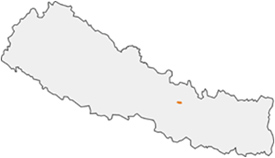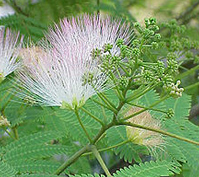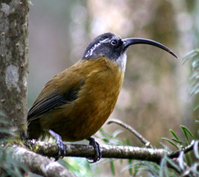- Home |
- Why With Us |
- About Us |
- Booking |
- Contact Us |
- Site Map
- Home
-
Nepal
-
Trekking
- Arun Valley with Gokyo Lakes
- Everest Base Camp Trek
- Everest- A Living Culture Exploration
- Everest Explore
- Everest Base Camp (via Thame) Trek
- Everest Base Camp with Kala Patthar
- Everest Comfort Trek
- Everest High Passes with Ama Dablam Base Camp
- Everest Mani Rimdu Festival Trek
- Everest Nagpa La Trek
- Everest with three high passes
- Gokyo Ri, Chola Pass & Chukung Ri with Kala Patthar
- Gokyo with Everest Base Camp
- Jomsom - Muktinath
- Jomsom - Muktinath
- Khayar Lake Trek
- Manaslu and Tsum Valley with Larkya La
- Upper Mustang Trek
- Manaslu High Circuit
- Manaslu, Tilicho Pass & Upper Mustang
- Annapurna Base Camp Trek
- The Annapurna Circuit Trek
- Annapurna Panorama
- Nar and Phu Valley Trekking
- Nepal Rhododendron Trek
- Royal Trek
- Saribung Trek and Expedition
- Annapurna Sanctuary Trek
- The Annapurna Sunrise Trek
- Expedition
-
Rafting
-
Peak Climbing
-
Tours
- Kathmandu-Chitwan-Jungle Tour with visit to Pokhara
- Dawn to Dusk Tour
- Historical, Natural & Cultural Tour with Camping
- Kathmandu Valley Temple Tour
- Temple - Panorama - Jungle Tour
- Taste of Nepal
- Central Nepal Tour
- Explore Nepal Tour & Trek
- Nepal Cross-country Tour
- Best of Nepal Tour & Treks
- Kathmandu valley rim Tour & Treks
- Nepal Culture Tour
- Introduction to Nepal Tour & Treks
- Nepal at a glance Tour & Treks
- Wonders of Nepal Tour & Treks
- Glimpses of Nepal Tour & Treks
- Through the Silhouette Tour & Treks
- Tent and Temple Tour
- Kathmandu-Chitwan-Pokhara Tour
- Historical, Cultural City and Jungle Tour
- Nepal Wildlife Tour
- Nepal Panorama Historical Tour
- Nepal Adventure Tour
- Nepal Pilgrimage Tour
- Ghalegaun-Ghanapokhara Homestay Tour
- Jungle Safari
- Adventure Sports
-
Trekking
- Tibet
-
Bhutan
-
India
- Yoga Tour
- About Us
-
The Great Himalayan Trail
-
Short Tours/Treks

Shivapuri National Park
Located less than 30 minutes drive north of Kathmandu and spread over 144 sq km Shivapuri National Park is a major watershed  and supplies the capital with its drinking water. With subtropical and temperate climatic zones, it has diverse vegetation composed of pine, oak, rhododendron and is rich in wild mushrooms of which there are at least 129 species here. Himalayan Black Bear, Spotted Leopard, Jungle Cat, and Rhesus Monkeys abound in the jungles here as do some 177 species of birds including 9 endangered species, and over 100 species of butterflies.
and supplies the capital with its drinking water. With subtropical and temperate climatic zones, it has diverse vegetation composed of pine, oak, rhododendron and is rich in wild mushrooms of which there are at least 129 species here. Himalayan Black Bear, Spotted Leopard, Jungle Cat, and Rhesus Monkeys abound in the jungles here as do some 177 species of birds including 9 endangered species, and over 100 species of butterflies.
The park is also a gateway to trekking destinations like Gosainkunda, Helambu, Kagarkot and the Langtang National Park. The area also holds significance for both Hindus and Buddhists. Only 11km away from Kathmandu the best time to visit the park is in spring or late autumn and winter.
History
The area has always been an important water catchment area, supplying the Kathmandu Valley daily with several hundred thousand cubic liter of water. In 1976, the area was established as a protected watershed and wildlife reserve.[1] In 2002, it was gazetted as Shivapuri National Park, initially covering 144 km2, and extended by the Nagarjun Forest Reserve in early 2009 to its present size
Climate
The park is located in a transition zone between subtropical and temperate climate. The annual precipitation of about 1,400 mm falls mostly from May to September, with 80% during monsoon. Temperatures vary from 2-17°C (36-63°F) during the winter season, rising to 19-30°C (66-86°F) during the summer season.
Vegetation
The typical vegetation of the park is middle hill forest from 1,000 to 1,800 metres (3,300 to 5,900 ft) of altitude, consisting of:
- Himalayan subtropical broadleaf forests in the lower and upper subtropical bioclimatic zone dominated by Schima-
 Castanopsis associations, with chir pine stands on southern dry ridges and associations of alder, Wild Himalayan cherry, Engelhardia and ring-cupped oak along streams;
Castanopsis associations, with chir pine stands on southern dry ridges and associations of alder, Wild Himalayan cherry, Engelhardia and ring-cupped oak along streams; - Eastern Himalayan broadleaf forests in the lower temperate bioclimatic zone with predominantly broadleaf evergreen species of Oak and Laurel families mixed with rhododendron on northern slopes.
On higher elevation a variety of medicinal herbs prosper. Botanists have recorded 129 species of mushrooms and 2,122 floral species, out of which 449 are vascular and 16 are endemic plants.
Fauna
Since 2002 several surveys were carried out to determine the faunal diversity of the protected area. In a field study carried out from July 2003 to July 2004 Indian leopard, Jungle cat, Large Indian civet, Golden jackal, Himalayan black bear, Yellow-throated marten, Small Asian mongoose, Himalayan goral, Barking deer, Wild boar, Rhesus monkey, Hanuman langur, Chinese pangolin, Indian Crested porcupine, Himalayan pika, Black-naped hare, Himalayan squirrel, Fawn-colored mouse, Brown-toothed shrew and Black rat were identified. Signs of Clouded leopard and Leopard cat, thought to be present, were not observed.In 2008, Intermediate Horseshoe, Greater Horseshoe and Big-eared Horseshoe bats were mist netted at the entrance of Nagarjuna cave inside the park.
In the western part of the park, herpetologists encountered Monocled cobra, Himalayan keelback, Olive Oriental Slender snake, Yellow-bellied Worm-eating snake, Variegated Mountain lizard, Oriental garden lizard, Many-keeled Grass skink, Sikkim skink, Black-spined toad, Long-legged Cricket frog and Horned frog in the summer of 2009.
Ornithologists recorded 318 species of birds including Eurasian eagle-owl, Slender-billed Scimitar-babbler, White-gorgeted flycatcher, Barred cuckoo-dove and Golden-throated barbet.
Tour and Trekking
Popular as trekking, hiking and recreation area, the Shivapuri National Park offers the nearest retreat away from the hubbub of city life.
Water Resources
Shivapuri is one of the main sources of drinking water for Kathmandu Valley. Everyday about 30 million liters of water is tapped from rivers such as the Bagmati and the Bishnumati as well as from several other smaller streams.
Places of Interest
The park is easily accessible from Kathmandu. Visitors are attracted to the park for trekking. Trekking routes to Nagarkot, Gosaikunda, Helambu and Langtang National Park also pass through the park. Several religious sites for the Hindus and the Buddhists lie inside the park.
On Nepalese New Year's Day, which falls in mid-April, pilgrims from Kathmandu valley and neighboring areas flock to Baghdwar and Bishnudwar of the park from where the sacred rivers Bagmati and Bishnumatii originate.
Visitors can have breathtaking views of the high Himalayas from the northern aspects of the park. Likewise, the panoramic views of Kathmandu valley could be seen from the southern slopes of the park,
Famous Trekking Destinations within the Park
- Panimuhan, Park HQ - Shivapuri peak (12 km)
- Nagigumba - Baghdwar - Chisapani (18 km)
- Nagigumba - Shivapuri peak (6 km)
- Kakani - Shivapuri
- Jhuje - Chisapani (12 km)
- Sundarijal - Chisapani (22km)
Access:
Shivapuri National Park can be reached by hiring taxi to Budhanilkhanta about km from heart of Kathmandu .Buses and tempos run to Budhanilkhanta from Rastriya Nach Ghar National Theatre) at the north -western corner of Rani-Pokhari .Buses also run to Bansbari the site of shoe factory about way from the centre of Kathmandu to Budhanilkhanta.
Entry Fee:
- For Nepalese Nationals, Rs.10/-
- For SAARC Nationals, Rs. 100/-
- For Other Foreign Nationals, Rs. 1,000/-
- Entrance fee not required for children under 10 years.

National Parks

Wildlife Reserve

Trekking in Nepal
Expeditions In Nepal
Rafting in Nepal
Tours in Nepal
All rights reserved.


